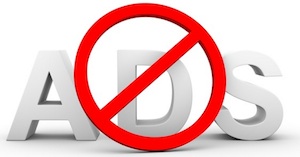 The use of ad blocking software, technology that allows users to bypass Internet advertisements, has surged in popularity, leaving digital media publishers at a loss for a solution. A series of recent reports reveals just how widespread consumers’ use of ad blockers has become, and what challenges they pose to digital marketers and publishers today.
The use of ad blocking software, technology that allows users to bypass Internet advertisements, has surged in popularity, leaving digital media publishers at a loss for a solution. A series of recent reports reveals just how widespread consumers’ use of ad blockers has become, and what challenges they pose to digital marketers and publishers today.
Digital Consumer Next, releasing key findings from its Consumer Ad Block Report, found 33 percent of consumers are at least somewhat likely to use ad blocking software within the next three months.
It seems consumer antipathy toward Internet ads, much like reported ad load times, has grown. The DCN study reveals more than 70 percent of Internet users dislike ads that expand over digital content, 57 percent have noticed slower page loads due to ads and 68 percent are concerned about the idea of ads tracking their behaviors.
Worse, the challenges digital publishers face in wake of ad blocking software is somewhat compounded by an industry that seems mostly unsure about how to solve the problem.
Publishers caught off guard
A recent survey of U.S. digital publishing professionals conducted by Cxense and Editor & Publisher found more than half of digital publishers surveyed — 52.8 percent — admitted they didn’t have a strategy in place for dealing with the issue of ad blockers.
The survey also showed fewer than 17 percent of all respondents have software capabilities that gauge how many visitors use ad blocking software when visiting their sites, and about half — 45.4 percent — admitted they weren’t even sure if their company possessed the ability to do so.
While an industry answer seems elusive, the urgency in finding a solution could be illustrated by the notion that consumers’ increasing use of using ad blocking software may already be having deleterious affects on ad spending.
Ad blockers hurting revenues
Pivotal Research Group analyst Brian Wieser last week said long-term outlook for the ad economy in 2016 would be characterized by a “tepid pace” — around three percent — citing ad blocking as a reason. Wieser noted that brand marketers’ concerns about ad blocking could compel some to ditch the medium and turn to branded content as an alternative.
Meanwhile, a recent Magna Global report on international ad sales predicts banner-ad sales would fall next year by about 2 percent, due to a proliferation of ad blocking software.
For years, consumers voiced their preference for advertising over a pay model for Internet content. Now that those solutions are the norm, consumers are doing anything they can to avoid those ads, which have exhibited increasing load time that drags down users' Internet and drains cellphone batteries.
Industry searches for solution
While solutions proposed for dealing with the prevalence of ad blocking vary — from introducing paywalls, to friendly reminders to readers that ads fund the content they view, to employing technology that prevents users employing ad blockers from accessing sites — digital publishers face an enormous challenge balancing quality user content with commercial solutions that don’t repel those users.
In October the Tech Lab at the Interactive Advertising Bureau launched its L.E.A.N. Ads program, which is slated to gather input for the purpose of creating a series of proposed industry standards for digital advertising.


 Abandon traditional content plans focused on a linear buyer progression and instead embrace a consumer journey where no matter which direction they travel, they get what they need, stressed marketing pro Ashley Faus during O'Dwyer's webinar Apr. 2.
Abandon traditional content plans focused on a linear buyer progression and instead embrace a consumer journey where no matter which direction they travel, they get what they need, stressed marketing pro Ashley Faus during O'Dwyer's webinar Apr. 2. Freelance marketers and the companies that hire them are both satisfied with the current work arrangements they have and anticipate the volume of freelance opportunities to increase in the future, according to new data on the growing freelance marketing economy.
Freelance marketers and the companies that hire them are both satisfied with the current work arrangements they have and anticipate the volume of freelance opportunities to increase in the future, according to new data on the growing freelance marketing economy. Home Depot's new attempt to occupy two market positions at once will require careful positioning strategy and execution to make it work.
Home Depot's new attempt to occupy two market positions at once will require careful positioning strategy and execution to make it work. Verizon snags Peloton Interactive chief marketing officer Leslie Berland as its new CMO, effective Jan. 9. Berland succeeds Diego Scotti, who left Verizon earlier this year.
Verizon snags Peloton Interactive chief marketing officer Leslie Berland as its new CMO, effective Jan. 9. Berland succeeds Diego Scotti, who left Verizon earlier this year.  Norm de Greve, who has been CMO at CVS Health since 2015, is taking the top marketing job at General Motors, effective July 31.
Norm de Greve, who has been CMO at CVS Health since 2015, is taking the top marketing job at General Motors, effective July 31.


 Have a comment? Send it to
Have a comment? Send it to 
No comments have been submitted for this story yet.